Hindu Festival Ashadi Ekadashi
Ashadi Ekadashi
Ashadi Ekadashi, also known as Devshayani Ekadashi, is a significant Hindu festival celebrated on the 11th day of the bright fortnight of Ashadha month (June–July). It marks the beginning of Lord Vishnu’s four-month cosmic sleep, called Chaturmas. Devotees observe fasting, prayers, and bhajans, seeking blessings of health, prosperity, and spiritual upliftment. In Maharashtra, the day is especially important as thousands of devotees, known as Warkaris, undertake the grand Pandharpur yatra to worship Lord Vitthal (a form of Vishnu). Ashadi Ekadashi symbolizes devotion, purity, and surrender to God, reminding people of faith, discipline, and selfless love for the divine.
Ashadi Ekadashi is the path of devotion and purity.
Ashadi Ekadashi
Ashadi Ekadashi, also known as Devshayani Ekadashi, is observed in the month of Ashadha (June–July). It marks the beginning of Chaturmas, the four-month rest of Lord Vishnu. Devotees fast, pray, and sing bhajans. In Maharashtra, the grand Pandharpur yatra honors Lord Vitthal with deep devotion and joy.
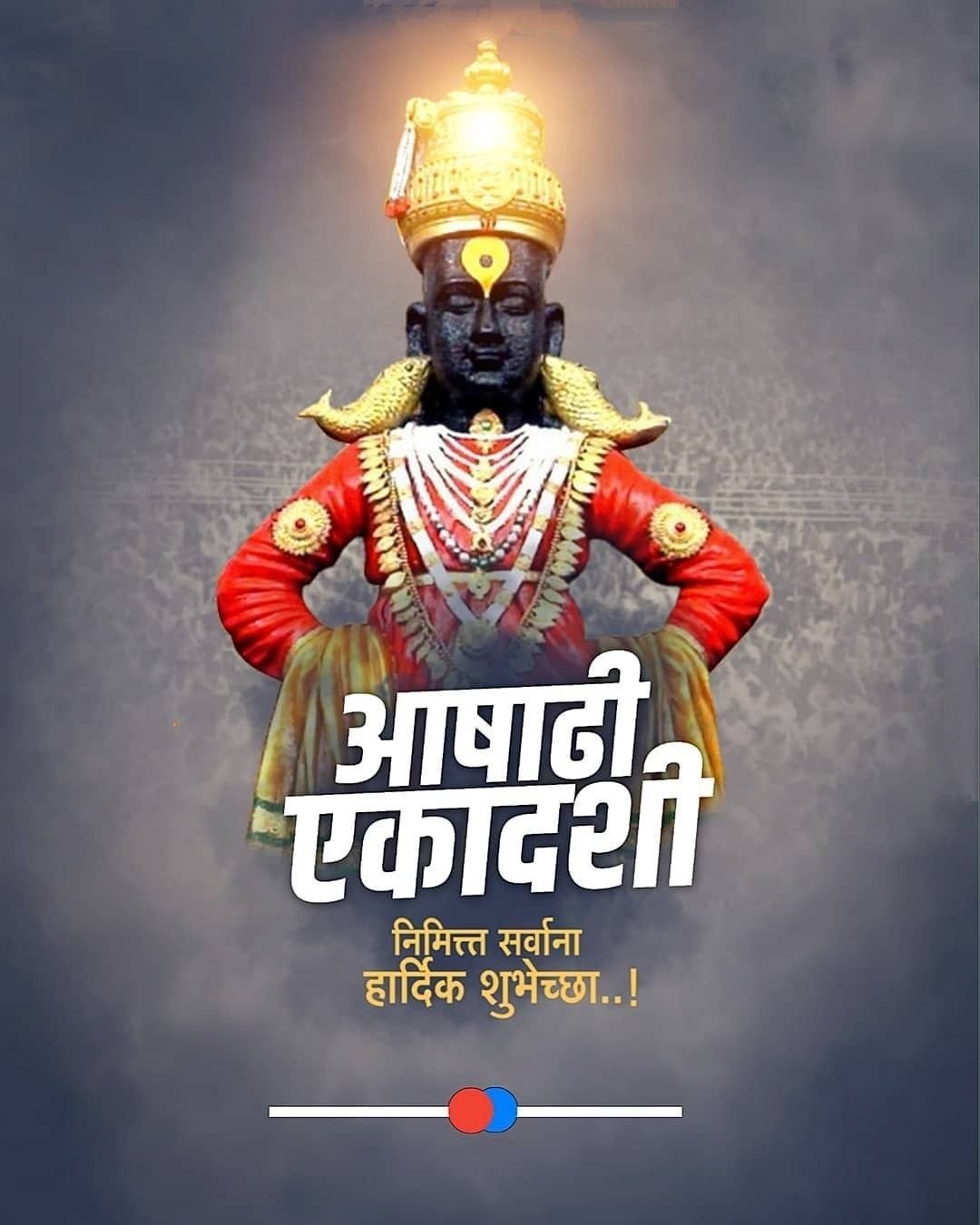
Mythological Significance & History
Ashadi Ekadashi is one of the most significant and sacred Ekadashis in the Hindu tradition, observed on the eleventh day of the bright fortnight of the month of Ashadha (June–July). It holds immense religious importance, especially in Maharashtra, where it is also known as Devshayani Ekadashi or Shayani Ekadashi. On this day, Lord Vishnu is believed to enter a state of deep cosmic sleep (Yoga Nidra) on the serpent Shesha in the Kshir Sagar (ocean of milk). This period of divine rest continues until Prabodhini Ekadashi in the month of Kartik, marking a holy four-month phase called Chaturmas.
Devotees observe this day with great devotion by fasting, chanting prayers, and engaging in kirtans and bhajans dedicated to Lord Vishnu and his incarnations. The fast is considered highly auspicious and is believed to purify the heart, wash away sins, and bring spiritual progress. In Maharashtra, this day is especially associated with Lord Vithoba (a form of Vishnu) at Pandharpur. Thousands of devotees, known as Warkaris, undertake a grand pilgrimage on foot, called the Pandharpur Wari. Carrying the palanquins (palkhis) of saints like Sant Tukaram and Sant Dnyaneshwar, they march joyfully, singing abhangas (devotional hymns) until they reach the Vithoba temple at Pandharpur.
.

Significance of this Ashadi Ekadashi
Ashadi Ekadashi is a highly revered Hindu festival observed on the eleventh day (Ekadashi) of the bright fortnight in the month of Ashadha (June–July). It is also known as Devshayani Ekadashi or Shayani Ekadashi. On this day, Lord Vishnu is believed to enter a divine slumber (Yoga Nidra) on the cosmic serpent Shesha in the Kshir Sagar. His rest continues until Prabodhini Ekadashi in the month of Kartik, marking the beginning of Chaturmas, a holy four-month period dedicated to penance, devotion, and spiritual practices.
Devotees across India observe this Ekadashi with fasting, prayers, and chanting of Vishnu’s names. The fast is regarded as spiritually purifying and is believed to absolve sins, bring prosperity, and help attain liberation. In Maharashtra, the festival has immense cultural and devotional significance, being closely linked with Lord Vithoba, a form of Vishnu, worshipped at Pandharpur.
The highlight of Ashadi Ekadashi is the grand Pandharpur Wari, a pilgrimage in which lakhs of Warkaris (devotees) march on foot to the Vithoba temple at Pandharpur. Carrying palkhis (palanquins) of great saints like Sant Tukaram and Sant Dnyaneshwar, they travel joyfully, singing abhangas and bhajans in praise of Vithoba. The atmosphere becomes filled with devotion, discipline, and community spirit.
Ashadi Ekadashi is therefore not only a religious observance but also a festival of unity and devotion. It inspires devotees to surrender to God’s will, live a pure life, and walk on the path of righteousness.
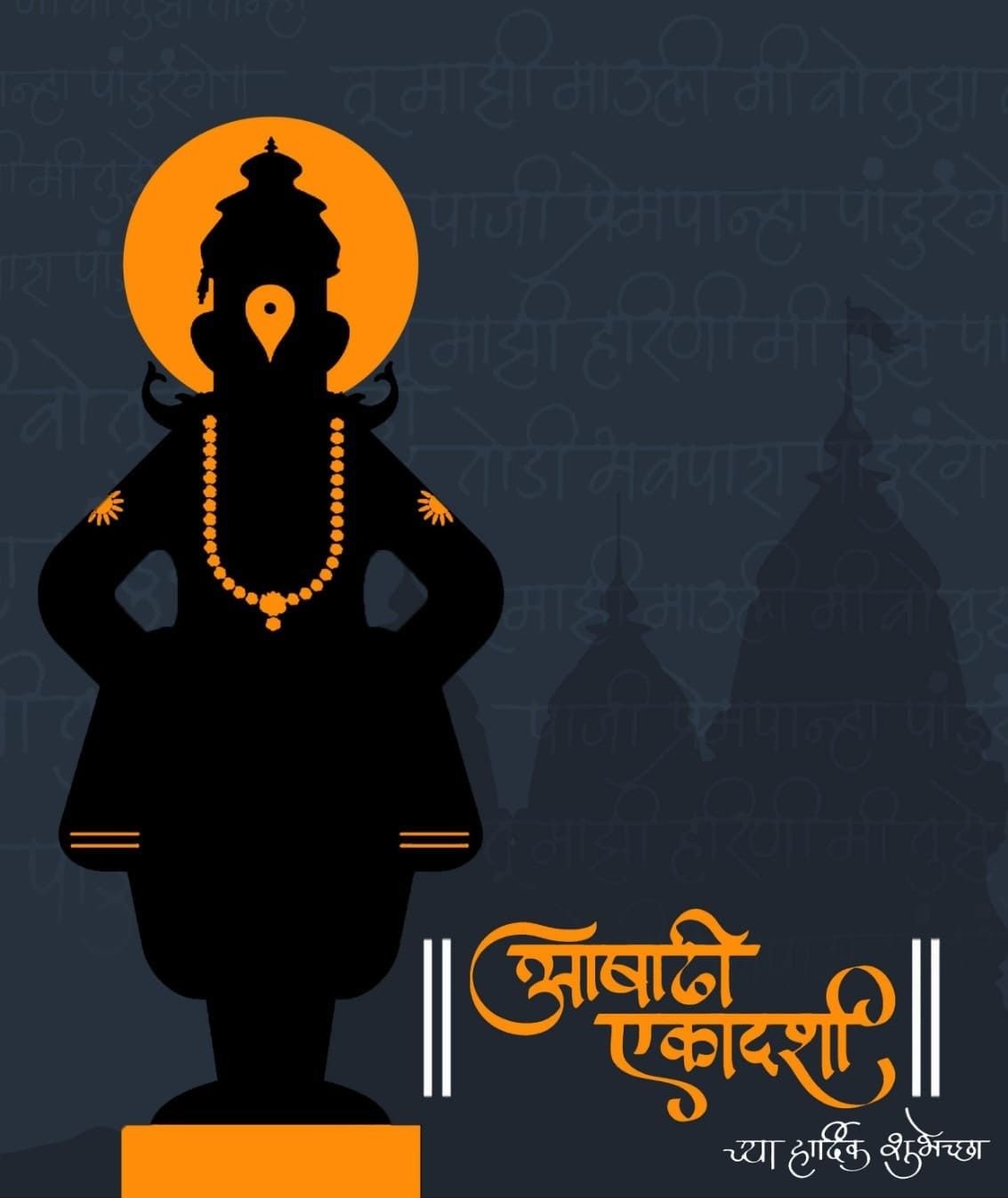
Rituals & Traditions of Ashadi Ekadashi
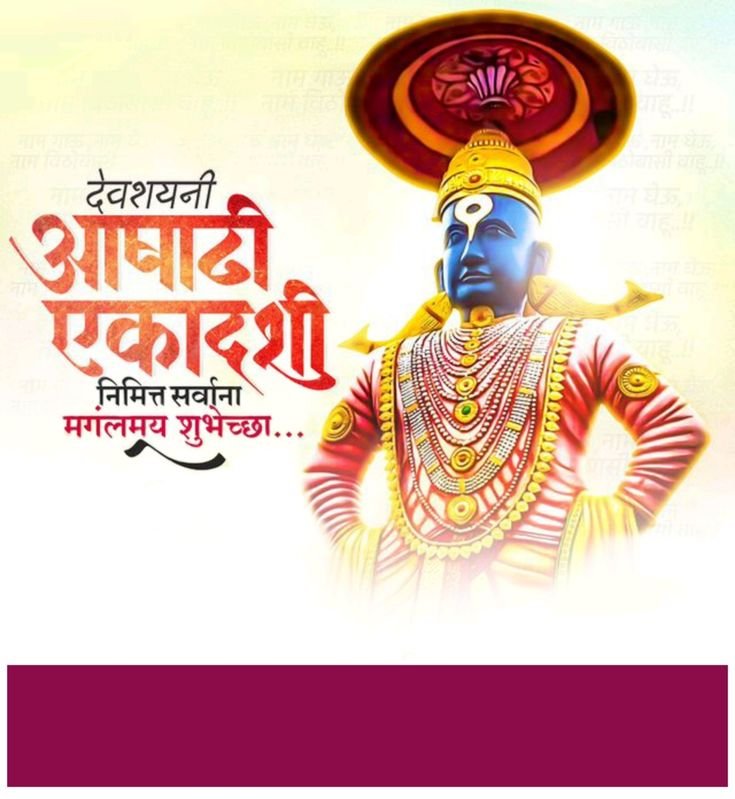
Ashadi Ekadashi, also called Devshayani or Shayani Ekadashi, is an important Hindu festival observed on the eleventh day of the bright fortnight in the month of Ashadha (June–July). On this sacred day, Lord Vishnu is believed to enter Yoga Nidra (cosmic sleep) on the serpent Shesha in the Kshir Sagar. This marks the beginning of Chaturmas, a four-month holy period dedicated to penance, devotion, and religious austerities, which continues until Prabodhini Ekadashi in Kartik month.
Devotees celebrate Ashadi Ekadashi with great faith by observing fasts, chanting prayers, and singing bhajans in honor of Lord Vishnu. The fast is considered to purify the soul, remove past sins, and bring spiritual upliftment.
In Maharashtra, the festival is most famous for its association with Lord Vithoba of Pandharpur. Lakhs of devotees, known as Warkaris, undertake the grand Pandharpur Wari pilgrimage, walking for days while carrying the palkhis (palanquins) of revered saints like Sant Tukaram and Sant Dnyaneshwar. They sing devotional abhangas and perform kirtans throughout the journey, filling the atmosphere with divine energy.
Ashadi Ekadashi is thus not just a religious fast but also a celebration of devotion, discipline, and unity. It inspires devotees to surrender to the will of God and seek blessings for peace, prosperity, and liberation.
Spiritual Importance & Cultural Significance
Ashadi Ekadashi, also known as Devshayani Ekadashi or Shayani Ekadashi, is one of the most sacred observances in Hinduism. It falls on the eleventh day (Ekadashi) of the bright fortnight in the month of Ashadha (June–July). According to Hindu belief, on this day Lord Vishnu goes into Yoga Nidra (divine sleep) on the cosmic serpent Shesha in the Kshir Sagar (ocean of milk). His slumber continues for four months, until Prabodhini Ekadashi in the month of Kartik. This period, known as Chaturmas, is considered highly auspicious for penance, fasting, devotion, and spiritual practices.
Ashadi Ekadashi holds immense religious and cultural significance. Devotees observe strict fasts, chant Vishnu Sahasranama, recite scriptures, and engage in kirtans and bhajans in praise of Lord Vishnu. The fast is believed to wash away sins, bring prosperity, and help the devotee progress toward liberation (moksha).
In Maharashtra, Ashadi Ekadashi is deeply connected with the worship of Lord Vithoba, a form of Vishnu, at Pandharpur. The highlight of the celebration is the Pandharpur Wari, a grand pilgrimage in which lakhs of devotees, known as Warkaris, walk for days carrying the palkhis (palanquins) of revered saints like Sant Tukaram and Sant Dnyaneshwar. Singing devotional abhangas and performing kirtans, they create an atmosphere filled with devotion, unity, and spiritual joy.
This festival is not only about fasting but also about strengthening faith, cultivating discipline, and surrendering to God’s will. Ashadi Ekadashi symbolizes the bond between devotees and the divine, reminding people to lead a life of purity, humility, and devotion. It brings together millions in a celebration of bhakti, making it one of the most important and vibrant festivals in the Hindu tradition.
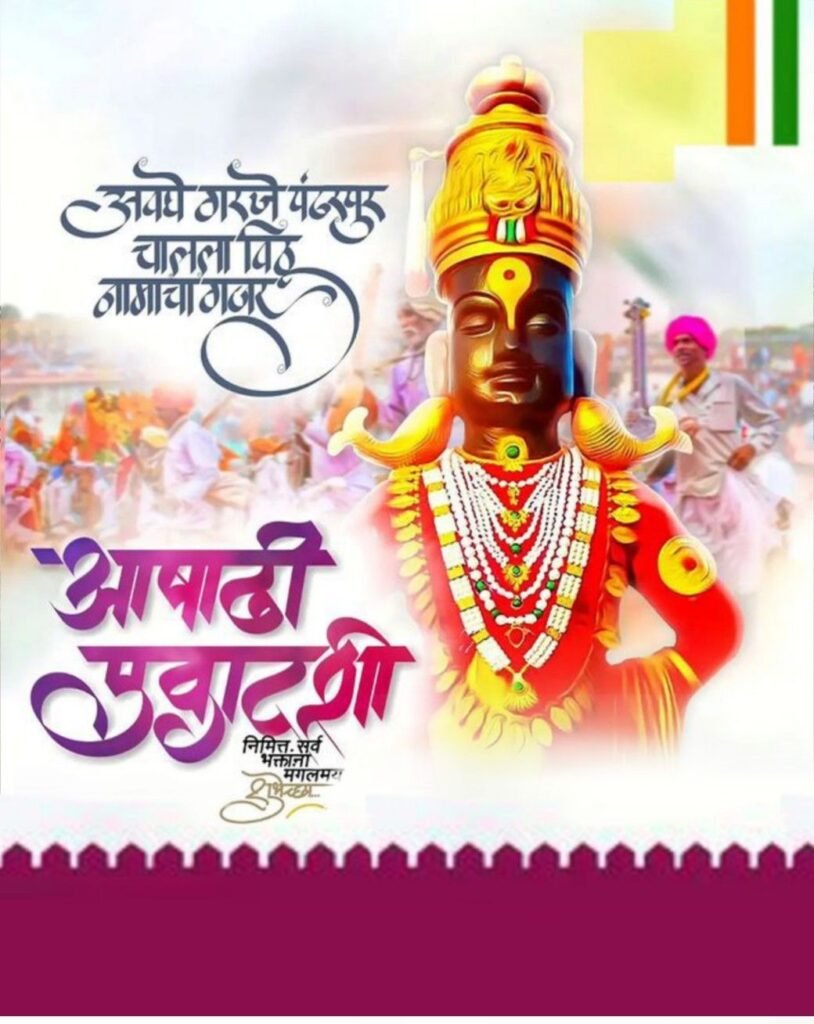
Food & Sweets & Modern Celebrations
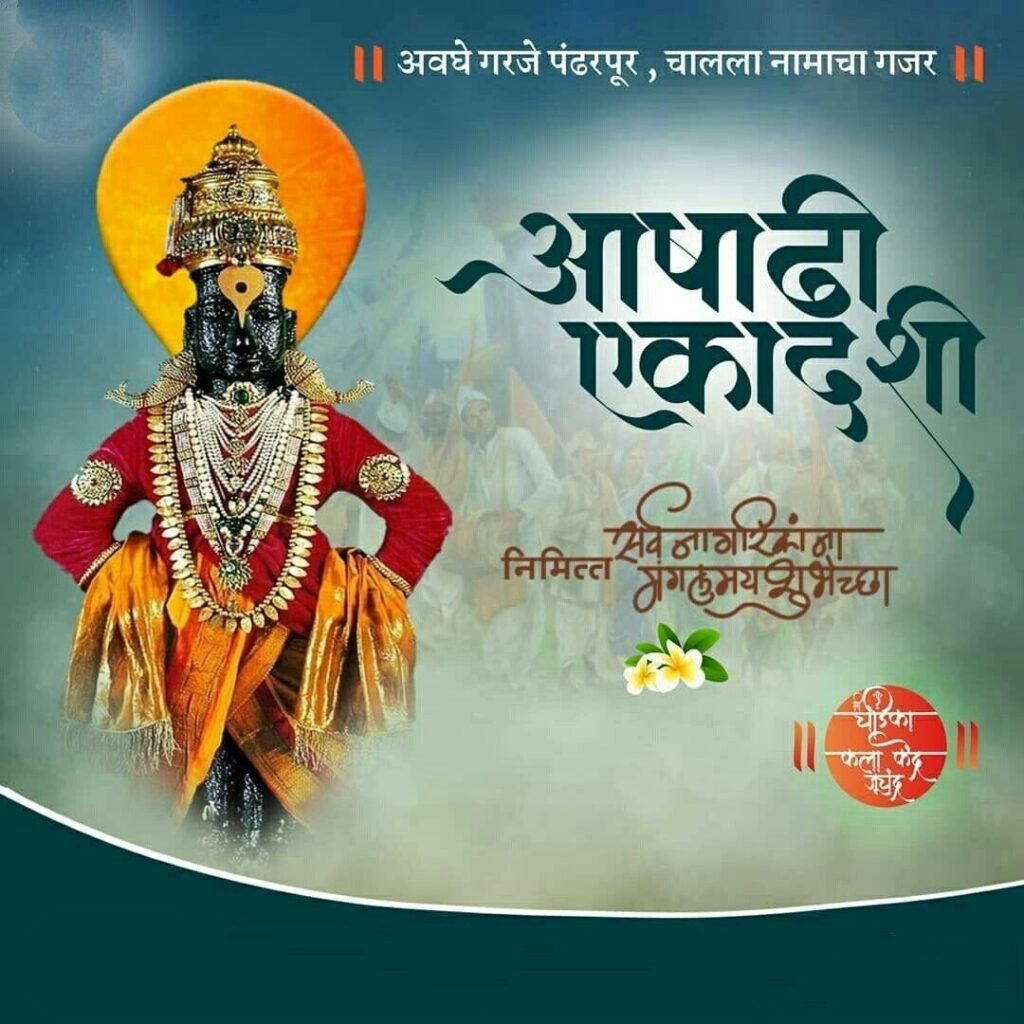
The observance of Ashadi Ekadashi is considered highly meritorious. Devotees undertake fasting, recite prayers, read scriptures like the Vishnu Sahasranama, and engage in devotional singing. It is believed that observing this Ekadashi brings spiritual purity, removes sins, and grants peace, prosperity, and the blessings of Lord Vishnu.
In Maharashtra, Ashadi Ekadashi is celebrated in a grand and unique way. It is deeply associated with Lord Vithoba (a form of Vishnu) at Pandharpur. Lakhs of devotees, popularly known as Warkaris, participate in the famous Pandharpur Wari, a remarkable pilgrimage that culminates at the Vithoba temple. Carrying the palkhis (palanquins) of revered saints like Sant Tukaram and Sant Dnyaneshwar, the Warkaris walk for several days, singing abhangas (devotional hymns) and performing kirtans. The journey is not just a physical act but a spiritual offering, symbolizing humility, surrender, and devotion.
Ashadi Ekadashi is therefore not only a day of fasting but also a celebration of faith, unity, and collective devotion. It teaches devotees to live a life of purity, discipline, and love for God. By surrendering to Lord Vishnu’s will, devotees find strength, peace, and spiritual fulfillment. The atmosphere of Pandharpur during this festival is filled with divine energy, making Ashadi Ekadashi one of the most vibrant and spiritually uplifting occasions in the Hindu calendar.




















































